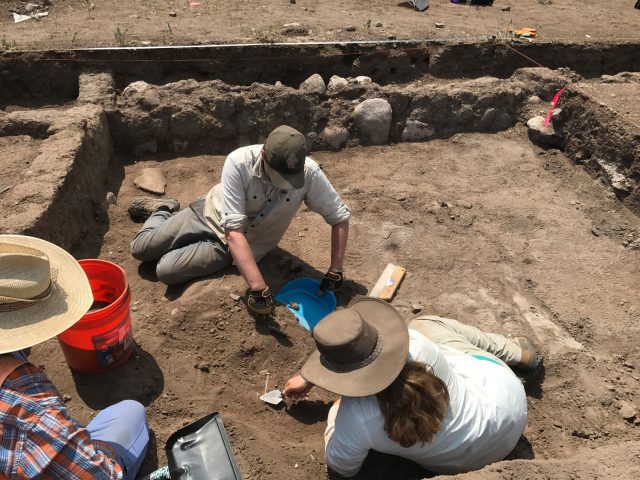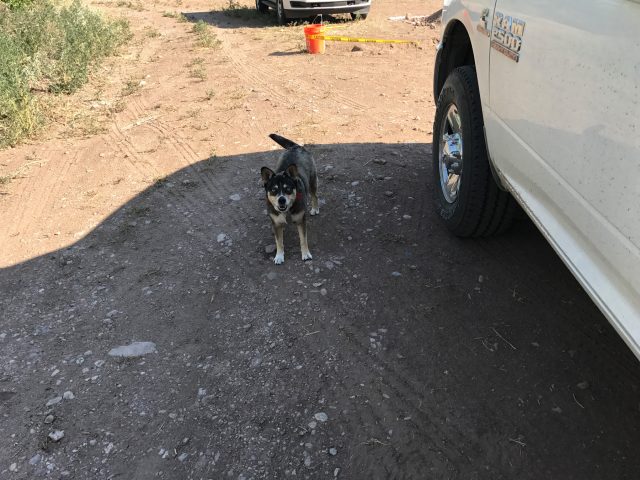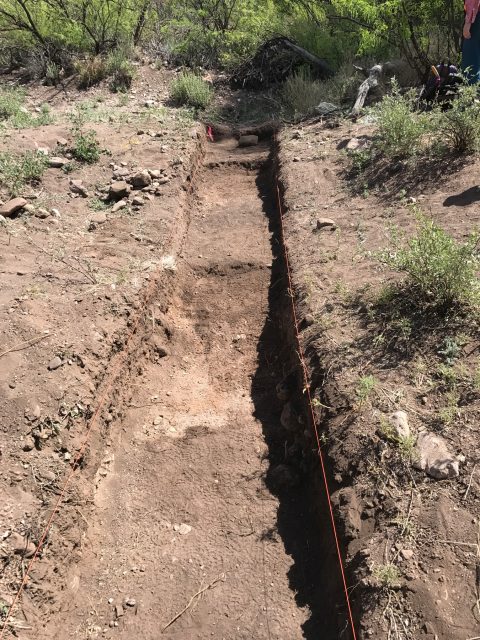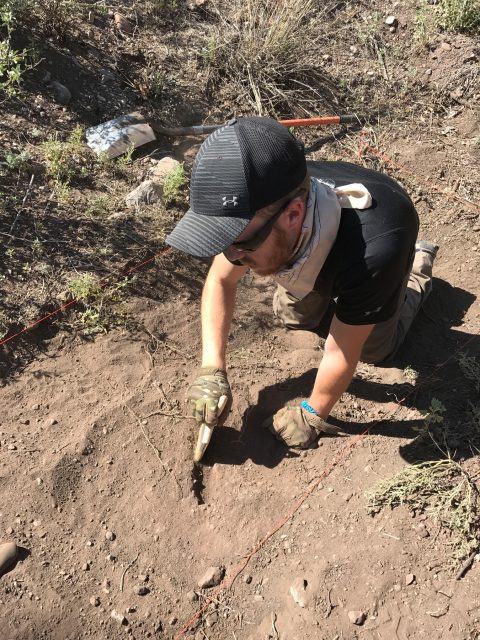- Home
- >
- Preservation Archaeology Blog
- >
- Learning about Preservation in Archaeology
(July 5, 2017)—Recognizing that archaeological resources are nonrenewable, today’s archaeologists try to preserve as much of the resource as possible, as circumstances allow. Some nondestructive techniques include ground-penetrating radar, remote-sensing techniques, extensive surveying, exploratory trenches, and sample units. At the Preservation Archaeology Field School at the Gila River Farm site, we are learning about some of these practices and how to employ them in our future careers.
Last year, surveys revealed an area that showed a possible room block on the far north side of the site. The 2016 field crew then dug a small (2 x 1-meter) exploratory trench, finding a section of wall from an ancient room.
|
|
This year, working under the guidance of the field director, we opened an eight-meter-long and one-meter-wide trench next to last year’s test unit to determine whether the wall section continued. She chose the exploratory trench’s location in order to determine the room block’s integrity. At first, it seemed that we had located two walls exactly where they should be. Unfortunately, as we progressed, it appeared that the walls were adobe melt, and that the area had been heavily looted in the past. After reaching a depth of a meter and a half, we moved on—no intact archaeological deposits remained.
Next, our crew moved to the eastern section of a large block of rooms at the southern end of the site, where we excavated a series of shallow trenches to look for the tops of preserved walls without disturbing intact archaeological deposits farther below the ground surface. First we began a trench running east–west in order to find the easternmost section of the room block. The trench ended up being five meters long before we closed it. Although we did not find the eastern wall we were looking for in that trench, we did locate it in an adjacent area.

We then opened three more shallow trenches in order to find the southernmost wall of the room block, and ended up finding six adjacent rooms. As part of the preservation plan, we only collected diagnostic artifacts from these areas, such as ceramic rim pieces identifiable to a specific pottery type, obsidian flakes, identifiable animal bone, and other unusual artifacts that appeared in the trench. All other artifacts from the trenches will be returned to those areas as we backfill. This series of shallow wall trenches allowed us to develop an idea of the locations for further excavation that would provide the best sample of the site.
Our field director marked off part of an adobe room just east of our last trench for more thorough excavation. The excavation unit we opened up was 4 x 3 meters, and it covered approximately two-thirds of the room. We were able to locate the north and east walls of the room as we excavated the first level, or 20 centimeters, which reduced the unit to an irregular shape, as we only wanted to excavate inside the room. For the first level of the unit, we used a ¼-inch screen, and switched to a 1/16 inch (window) screen for every fifth bucket. This allowed us to finish excavation in this area during the time allotted and to determine how screen size affects recovery of different artifacts.
By thoroughly sampling a limited number of rooms, we were able to preserve the rest of the site while developing a strong understanding of people’s activities at the site.

One thought on “Learning about Preservation in Archaeology”
Leave a Reply Cancel reply
Explore the News
-
Join Today
Keep up with the latest discoveries in southwestern archaeology. Join today, and receive Archaeology Southwest Magazine, among other member benefits.


How great that you talk about how you were able to preserve so much of the site while still learning a lot. I am starting a new anthropological business this year. I will find a good archaeological survey service locally to help.